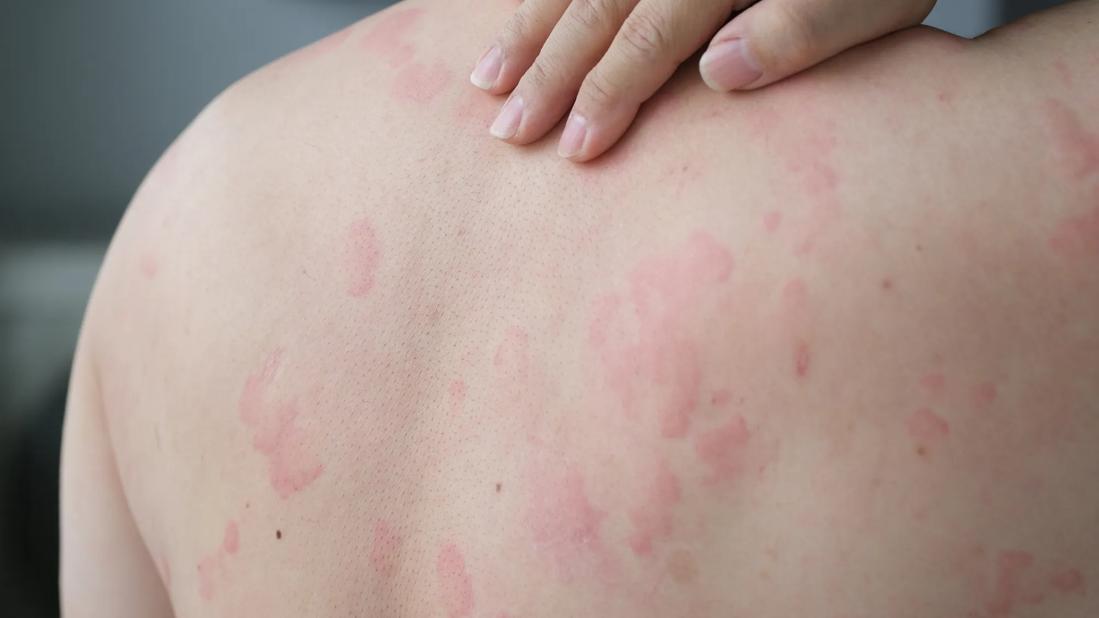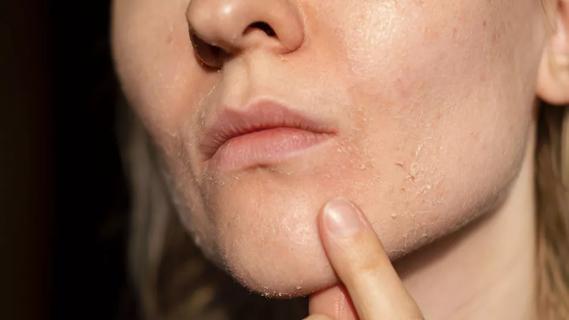Infections, autoimmune conditions, major life changes, extreme temps and even sunlight can cause this itchy condition

They’re back. Those itchy, raised welts that sting, burn and, frankly, look terrible. You keep getting them — again and again. But why? Something must be causing these irritating hives, right?
Advertisement
Cleveland Clinic is a non-profit academic medical center. Advertising on our site helps support our mission. We do not endorse non-Cleveland Clinic products or services. Policy
Did you know there are two types of hives — acute and chronic? All hives start when your body’s immune system reacts and releases histamine. This chemical causes the redness, swelling and itching common to both acute and chronic hives. That’s where similarities end.
“Acute hives tend to be what you typically think of when you hear about hives,” says allergy and immunology specialist Sonya Parashar, MD. “They almost diagnose themselves. I often talk with patients who say, ‘I ate peanut butter, and then I immediately broke out.’ That’s a classic case of acute hives.”
You may get acute hives once or twice in your life. They’ll usually erupt within two hours of a trigger exposure. Once treated, they’ll go away and (maybe) never come back.
Chronic hives are a different story. They flare up at least twice weekly for six weeks or longer. This can go on for months, or even years. And that’s a lot of bumps, itching and frustration.
The next big question? Why are you getting chronic hives? Often, even your doctor doesn’t know. The usual suspect, an allergic reaction, rarely causes chronic hives.
“In our minds, when we get hives, we immediately wonder what’s triggering it. But chronic hives have their own agenda and just pop up whenever about 80% to 90% of the time,” Dr. Parashar says. “That can be really frustrating.”
Advertisement
Just hop online and search for information about chronic hives. You’ll quickly notice Reddit boards and other social media community posts about how people keep getting hives for “no reason at all.” You’re not alone in this irritating and perplexing journey.
Even though most flares have no known trigger, some physical ones are easier to pinpoint. Dr. Parashar points out infections as a regular culprit.
“I’ve seen patients who had a virus or bacterial infection. Then, weeks or months later, they’re having days and days and weeks of hives,” she says. “Sometimes, it comes with a big hospitalization. Other times, a regular cold can start the cycle.”
Autoimmune conditions where your body’s immune system goes into overdrive and attacks itself can also be at fault. Underlying conditions that may be the root cause of your flares include:
Other health conditions can trigger chronic hives. Asthma, lymphoma and liver disease are all frequent culprits.
Dr. Parashar notes that she also treats chronic hives in patients who’ve had major life events — a death in the family, a wedding, a divorce, or a new house or job. Even happy things can cause stress and chronic hives. And yes, even having chronic hives can cause stress. You can even get stuck in a cycle of worry and flares without treatment.
Chronic flares can start from physical things or inducible triggers. Some common ones are:
Regularly taking nonsteroidal anti-inflammatory drugs (NSAIDs) like aspirin (Bayer®) ibuprofen (Motrin® or Advil®) and naproxen sodium (Aleve®) to treat chronic headaches or joint pain may trigger lingering hives. Prescription pain medications like opioids can also have the same effect. But another pain reliever, acetaminophen (Tylenol®), isn’t a chronic idiopathic urticaria trigger.
“Hives from these triggers tend to be episodic — meaning you’re not going to have them every day for weeks unless you keep doing things that trigger them,” Dr. Parashar notes.
Let’s say you get chronic hives from hot water. And they won’t go away because you keep taking scalding showers every morning. Or maybe you get flares from clothing items that are too tight. You love wearing that overly snug sports bra. But the straps keep setting off another round of chronic hives because of the constant pressure. What do you do?
You learn what those triggers are and make changes to avoid flares by eliminating the known cause (if there is one). Not all chronic hives are that simple to avoid. Because most flares are spontaneous, uncovering a cause can be tedious.
Advertisement
If you have patience, you may want to keep a chronic hives diary that tracks what you do daily. When you have a hive flare-up, note it in your diary. Keep noting if the flare lasts more than two days or returns for more than six weeks. This may help you find a pattern and encourage you to make certain lifestyle changes. But if a pattern doesn’t emerge even after keeping track of your flare-ups, don’t become frustrated.
“There’s not always a clear history,” Dr. Parashar relays. “Chronic hives mostly fall into that spontaneous category, so diaries can be tricky. You may never find any traceable pattern.”
But if you notice a regular trigger, like a stressful day, or if you feel a medication you’re taking causes flares, let your healthcare provider know. They can help you better manage flares when you have them.
“We have many treatment options for managing chronic hives and flare-ups,” Dr. Parashar says. “So, there’s a silver lining. It’s also important to acknowledge that these hives can be episodic. They may flare up at the same time every month or year. That’s why you’ll want to know how to recognize your red flag symptoms.”
Advertisement
Learn more about our editorial process.
Advertisement

Tough times can become even tougher if they leave an itchy rash on your skin

Lifestyle adjustments like stress reduction, wearing softer clothing and staying out of the sun can help manage flares

Your provider can develop a personalized treatment plan, which may include prescription medications, antihistamines and corticosteroids

The fluctuation in your hormones can cause the red, itchy welts

Combat stress and anxiety — common chronic hives triggers — by focusing on sleep, staying active and leaning on others for support

Rarely are the red, itchy welts from chronic hives connected to what you eat

Sea lice aren’t really lice, but these tiny creatures can trigger an unpleasant allergic reaction

A distressed skin barrier can lead to red, itchy and scaly skin

The ‘sunshine vitamin’ is found naturally in some fish and is added to other foods

Autism and ADHD often go hand in hand, giving rise to the term AuDHD

The Yuzpe regimen is less effective than other forms of emergency contraceptives, and it’s associated with more side effects